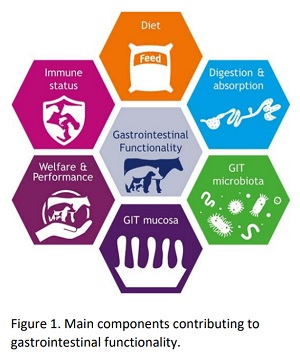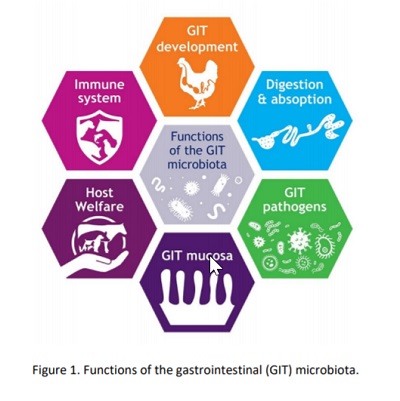Wednesday, August 23, 2023
Eight Steps to Optimal Animal Nutrition: A Complete Guide
Title: Gas-Free Gastronomy: Taming Bean-induced Flatulence with Expert Strategies 🌱🍽️
Title: Gas-Free Gastronomy: Taming Bean-induced Flatulence with Expert Strategies 🌱🍽️
Introduction:
Beans, those humble yet mighty legumes, often take center stage in cuisines worldwide. While they offer a treasure trove of nutrition, they also bring forth a not-so-welcome companion: gas production. In this informative guide, we'll unravel the mysteries of bean-related flatulence, explore science-backed tactics to tame it, and uncover the art of creating culinary masterpieces without compromising on health benefits. 🌍🌱
Understanding Bean-Generated Gas:
Behind the scenes of the gas-induced drama lies the composition of beans. Complex carbohydrates, known as oligosaccharides, are the culprits responsible for the gas show. These compounds remain undigested in the small intestine, making their way to the large intestine, where they meet the gut's resident bacteria and produce gases like hydrogen, methane, and carbon dioxide. The result? Those dreaded post-bean meal discomforts. 🥴💨
Soak and Rinse Ritual:
Kickstart your journey towards bean harmony with a pre-cooking ritual. Soaking beans prior to cooking serves a dual purpose. Not only does it soften the beans, but it also helps leach out some of the gas-causing compounds. Post-soak, give your beans a thorough rinse to bid adieu to any lingering offenders. 🚿👋
Fresh Waters of Change:
A critical step lies in the water transition. Swap out the soaking water for fresh water when cooking. This strategic swap prevents the reabsorption of compounds released during soaking, resulting in fewer gas-inducing agents in your meal. A simple switch that yields a big impact! 💧🔄
Spice it Up with Nature's Aids:
Elevate your culinary game while combating gas by embracing Mother Nature's helpers. Introducing digestive-friendly herbs and spices like ginger, cumin, fennel, and caraway can work wonders. These flavorful additions not only enhance taste but also assist in smoother digestion, lessening gas formation. 🌿🍃
Bicarbonate of Soda Ballet:
Enter baking soda, the potential gas-taming virtuoso. With careful choreography, it can soften beans and reduce gas production. 🩰🎭 However, a word of caution: use it sparingly! Overuse may disrupt the beans' texture and flavor. A gentle touch is key to this baking soda ballet. 💃🕺
Baby Steps and Enzyme Allies:
Embark on a journey of gradual bean inclusion in your diet. Slow and steady wins the race as your digestive system adapts to bean-packed meals. For an extra edge, consider enzyme supplements like Beano or Gas-X, which aid in breaking down those pesky oligosaccharides. As always, consult a healthcare professional before introducing supplements. 🐢🔍
Closing Act:
Beans, despite their flatulence-inducing tendencies, remain an indispensable culinary canvas. By decoding the science behind gas formation and wielding tactics like soaking, water swapping, spice infusion, and a touch of bicarbonate magic, you can savor beans without enduring the gas aftermath. Embrace individual differences, experiment with techniques, and embark on a gastronomic adventure that balances both taste and digestion. Here's to a world of bean delights, minus the gas-induced woes! 🎉🌮🍛 #GasFreeGastronomy #BeanHarmony #DigestiveDelights
Wednesday, January 02, 2019
Advancements in animal nutrition management enhance gut health, performance
Advancements in animal nutrition management enhance gut health, performance
Improve animal intestinal functionality, performance and health through research advancements in proper nutrition management.
Structure of peptidoglycans and the impact on gastrointestinal tract functionality
“Gut Health” in Animal Nutrition: Components of GI functionality
Benefits of feeding fatty acids to sows Piglet with ear tag The addition of fatty acids to sow rations improves colostrum quality, piglet survival and performance
Waste in the Gut: Peptidoglycans of Bacterial Origin GIT microbiota diagram Optimal gastrointestinal function is influenced by many factors, including gut microbiota and the way it interacts with the host. In fact, the gastrointestinal microbiota has proven to modulate the development of the gastrointestinal tract and improve its morphology, stimulating the development of the gastrointestinal immune system, promoting host nutrition and reducing gastrointestinal pathogens. Therefore, the gastrointestinal microbiota has a significant impact on host or animal welfare.
Risks of high iron in zinc oxide in animal diets Analysis examines the effects of excess, unintended iron levels in zinc oxide. Read more at wattagnet.com
Vitamin, trace mineral specifications
The need to review nutritional specifications with change in time, genetics, feed, environment and other factors affecting such





